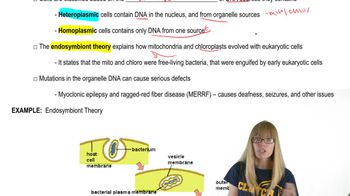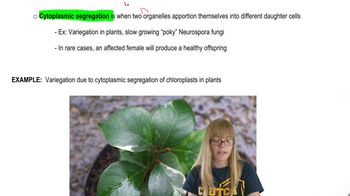3. Extensions to Mendelian Inheritance
Organelle DNA
Practice this topic
- Open Question
In this chapter, we focused on extranuclear inheritance and how traits can be determined by genetic information contained in mitochondria and chloroplasts, and we discussed how expression of maternal genotypes can affect the phenotype of an organism. At the same time, we found many opportunities to consider the methods and reasoning by which much of this information was acquired. From the explanations given in the chapter, what answers would you propose to the following fundamental questions?
What observations support the endosymbiotic theory? - Open Question
In this chapter, we focused on extranuclear inheritance and how traits can be determined by genetic information contained in mitochondria and chloroplasts, and we discussed how expression of maternal genotypes can affect the phenotype of an organism. At the same time, we found many opportunities to consider the methods and reasoning by which much of this information was acquired. From the explanations given in the chapter, what answers would you propose to the following fundamental questions?
How did the discovery of three categories of petite mutations in yeast lead researchers to postulate extranuclear inheritance of colony size? - Open Question
How are some of the characteristics of the organelles (the mitochondria and chloroplasts) explained by their origin as ancient bacterial endosymbionts?
- Open Question
Streptomycin resistance in Chlamydomonas may result from a mutation in either a chloroplast gene or a nuclear gene. What phenotypic results would occur in a cross between a member of an mt⁺ strain resistant in both genes and a member of a strain sensitive to the antibiotic? What results would occur in the reciprocal cross?


